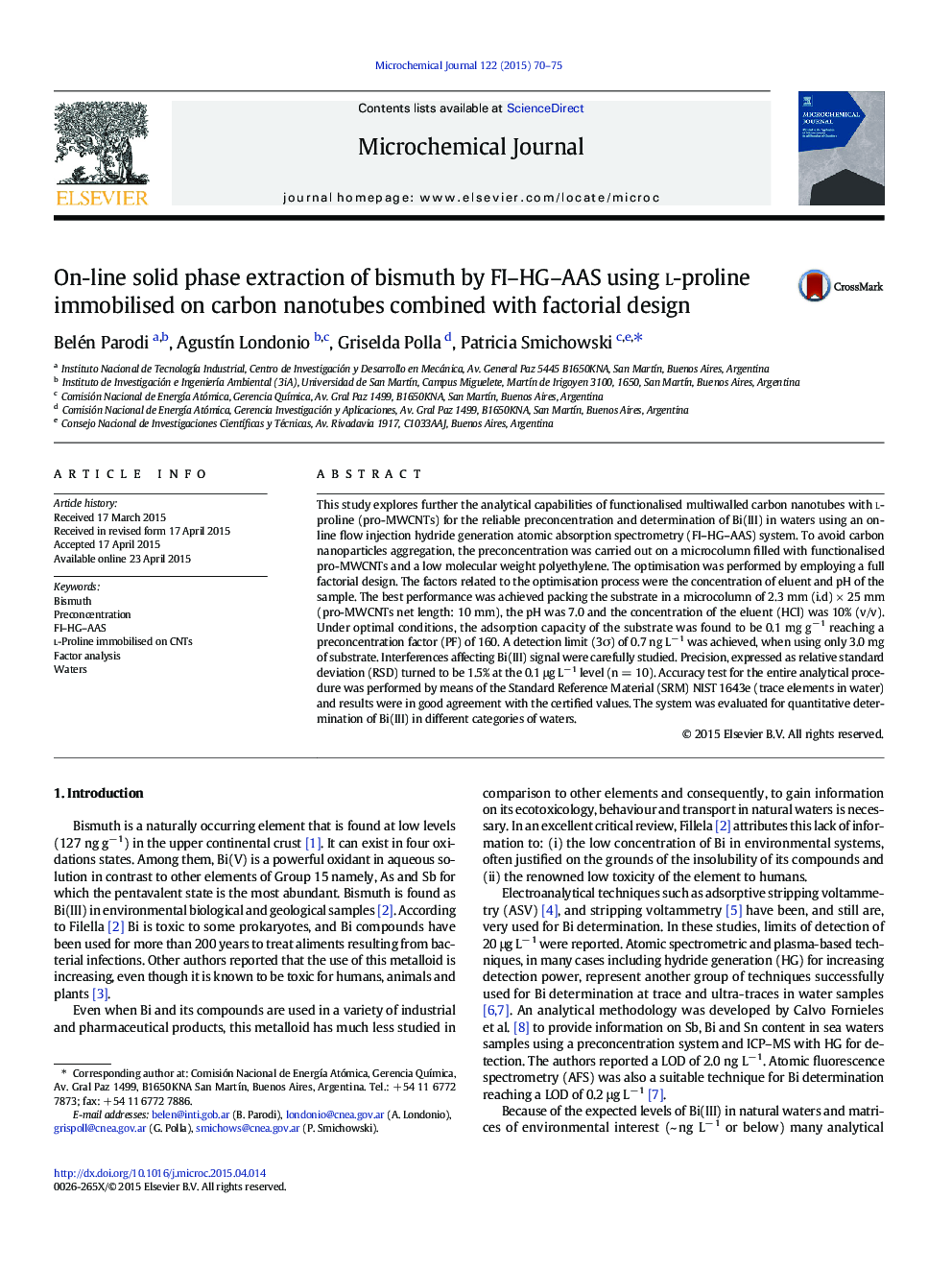| Article ID | Journal | Published Year | Pages | File Type |
|---|---|---|---|---|
| 1227762 | Microchemical Journal | 2015 | 6 Pages |
•l-Proline (pro-MWCNTs) is an efficient substrate for Bi(III) preconcentration.•Column design is crucial to obtain a high preconcentration efficiency.•The mixture of pro-MWCNTs with a low molecular weight polyethylene avoids nanotube agglomeration.•A high preconcentration factor of 160 is reached.•Bi can be detected at ng L− 1 levels with only 3.0 mg of substrate.
This study explores further the analytical capabilities of functionalised multiwalled carbon nanotubes with l-proline (pro-MWCNTs) for the reliable preconcentration and determination of Bi(III) in waters using an on-line flow injection hydride generation atomic absorption spectrometry (FI–HG–AAS) system. To avoid carbon nanoparticles aggregation, the preconcentration was carried out on a microcolumn filled with functionalised pro-MWCNTs and a low molecular weight polyethylene. The optimisation was performed by employing a full factorial design. The factors related to the optimisation process were the concentration of eluent and pH of the sample. The best performance was achieved packing the substrate in a microcolumn of 2.3 mm (i.d) × 25 mm (pro-MWCNTs net length: 10 mm), the pH was 7.0 and the concentration of the eluent (HCl) was 10% (v/v). Under optimal conditions, the adsorption capacity of the substrate was found to be 0.1 mg g− 1 reaching a preconcentration factor (PF) of 160. A detection limit (3σ) of 0.7 ng L− 1 was achieved, when using only 3.0 mg of substrate. Interferences affecting Bi(III) signal were carefully studied. Precision, expressed as relative standard deviation (RSD) turned to be 1.5% at the 0.1 μg L− 1 level (n = 10). Accuracy test for the entire analytical procedure was performed by means of the Standard Reference Material (SRM) NIST 1643e (trace elements in water) and results were in good agreement with the certified values. The system was evaluated for quantitative determination of Bi(III) in different categories of waters.
